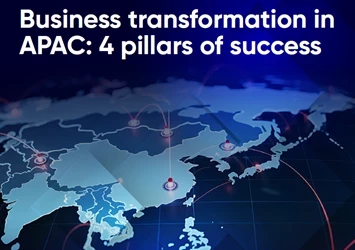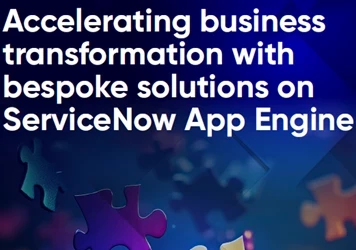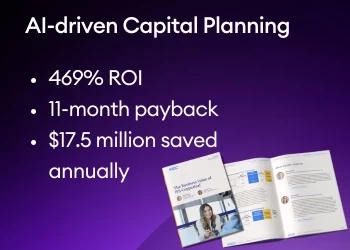Leading transformation without the perfect solution: Why experimentation is the strategy
It’s time to challenge the belief in the perfect solution and accept that imperfection is not failure
Add bookmark
It’s baffling to see so many business transformation professionals hold onto the belief that the perfect solution exists. Their belief in the perfect solution implies certainty about the world, certainty that problems are stable, predictable, and solvable once and for all. How can anyone be certain in an inherently uncertain world?
The world around us is inherently uncertain, and the obsession with control will not make this go away. Customer expectations shift. Regulations tighten and loosen. New technology emerges and collapses.
The technology of yesterday doesn’t hold up today, and the technology of today may not hold up tomorrow. While a lawnmower is objectively better than scissors for cutting grass, the lawnmower itself is not timeless, it’s a solution that will eventually be replaced by something more efficient, safer, or environmentally sustainable. The ‘solution’ is not the end of the story; it is just the next step in a chain of evolving practices.
Join the PEX Network community

Don't miss any news, updates or insider tips from PEX Network by getting them delivered to your inbox. Sign up to our newsletter and join our community of experts.
Learn MoreThe perfect solution does not exist
Companies that cling to the idea of a perfect solution can be blindsided. They aim for perfection when they should be ‘building from imperfection.’ In fact, imperfection is the starting point. I have yet to see anyone attempt to solve a problem without trial and error. Here’s what typically happens when someone encounters a problem:
- Broken car window? Glue it back in place.
- Outdated process? Hire more people to push it through.
- Inefficient reporting? Add another dashboard on top of the old one.
Are these solutions perfect? No. They are temporary workarounds. We can’t provide a solution if we don’t know the actual problem. There is no solution because we have not discovered one yet. What we can do is accept that uncertainty is inherent and embrace a more realistic and ultimately more powerful approach: experimentation.
From selling solutions to enabling experimentation
While there is much talk about selling solutions, whether it be software, operating models, or consulting frameworks, what’s really being sold selling is experimentation. Vendors promise platforms that will transform the business, the VP wants to approve budgets in the tens of millions, and delivery teams will spend years implementing them. They want to believe that signing a contract, installing a system, or rolling out a program means the problem is solved. Yet when the system finally goes live, months or years may have passed, and it is already out of date.
By then, large companies end up experimenting with solutions of their own. Here are a few common examples:
- No rostering tool? We’ll use Excel to keep track of things manually.
- No database? We’ll keep everything on paper and store it in a bunker.
- No strategy? We’ll create a nice graphic explaining our roadmap.
There is nothing inherently bad about them, except that they are not really solutions. They should be called what they really are: temporary workarounds or a ‘work-in-progress.’ They do alleviate some pain for users, but a stronger solution would require experimentation.
Using imperfection as a stepping-stone
When we apply a solution, it goes something like “here is the answer. Install it, and your problem will go away.” We then realize that the technology doesn’t solve a problem once it’s been ‘installed.’ It almost always becomes “here is a tool. Let’s test how it works in your context, learn from the results, and adapt accordingly.” If you think about your favorite software or hardware, it would have begun with pilots, tested against numerous versions, before reaching the hands of users.
When a solution providers believe that their version is the perfect one, it can create strong assumptions about why it’s right. This can close off the opportunity to test if it actually works. It’s time to challenge the belief in the perfect solution and accept that imperfection is not failure. In fact, it is far from it. However imperfect a solution may be, it’s still a great stepping stone for experimentation and discovering new use cases.
Stop selling certainty, start experimenting
That perfect solution you’re obsessing over is really just a work-in-progress that has plenty of room to improve. Since uncertainty is so inherent in our lives, the question is no longer, “what solution do we need?” but rather “how do we design the next experiment?”
- We must accept uncertainty. Instead of pretending to know the future, it’s more realistic to accept uncertainty.
- Incremental progress is also progress. Investing in the perfect solution is the biggest risk of all. By testing in small increments, organizations avoid costly failures from all-or-nothing bets.
- Success and failure are part of innovation. Every experiment, successful or not, creates knowledge that can be useful for other teams and projects.
- No longer are vendors just solution-sellers, they must become partners in experimentation. They should be helping clients explore options and adapt to change rather than promising a solution to risk-averse companies.
Great transformation leaders already know that obsessing over the perfect solution is no longer viable. Their success is not defined by how neatly a problem is solved, but rather by one’s willingness to accept uncertainty and experiment when they know they don’t have all the answers.
PEX Report 2025/26: Global state of business transformation

The PEX Report 2025/26 examines the results of our annual survey of more than 200 professionals with insights from more than a dozen industry business and thought leaders from across the globe. Contributors include leaders from Mars, Navy Federal Credit Union, Pacific International Lines, Sodexo, SAP and Nintex!
Explore why true business transformation is not a singular project but an ongoing journey, one that requires visionary leadership, cross-functional collaboration, technological prowess and an unrelenting commitment to agility and innovation. Those that embrace this evolution holistically are not just surviving the future, they are shaping it!
Download Now













